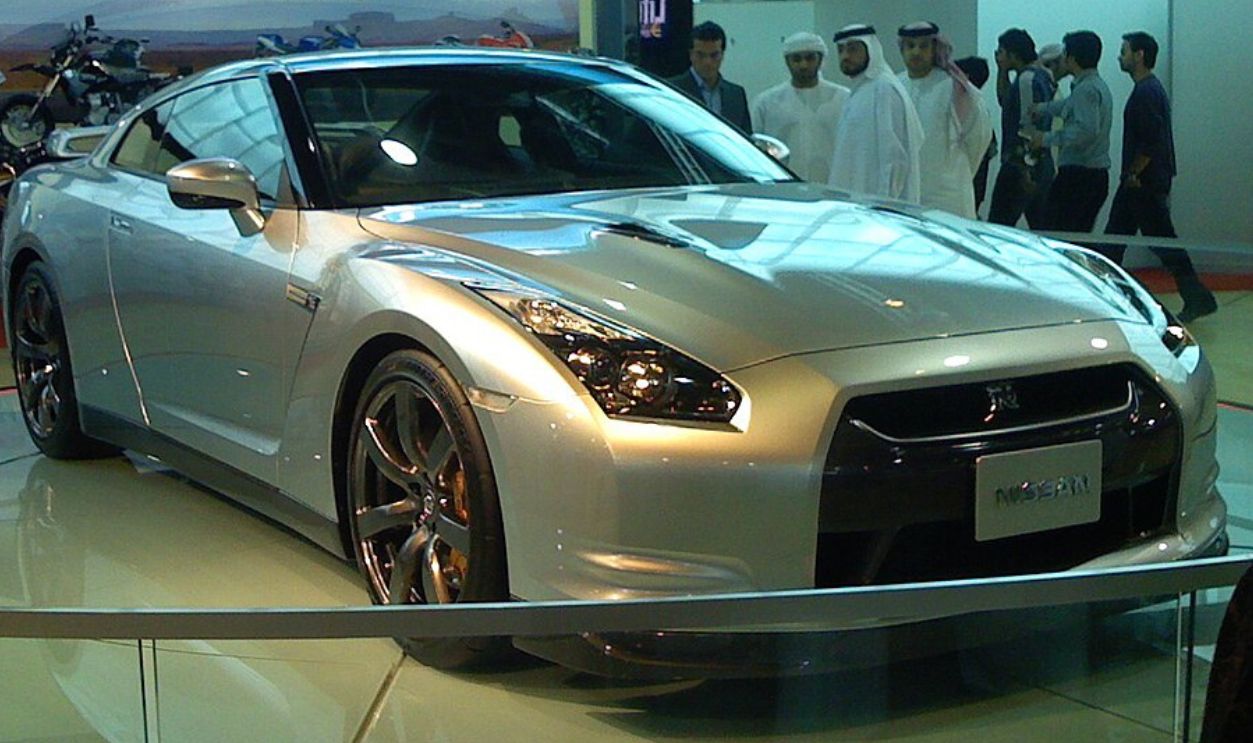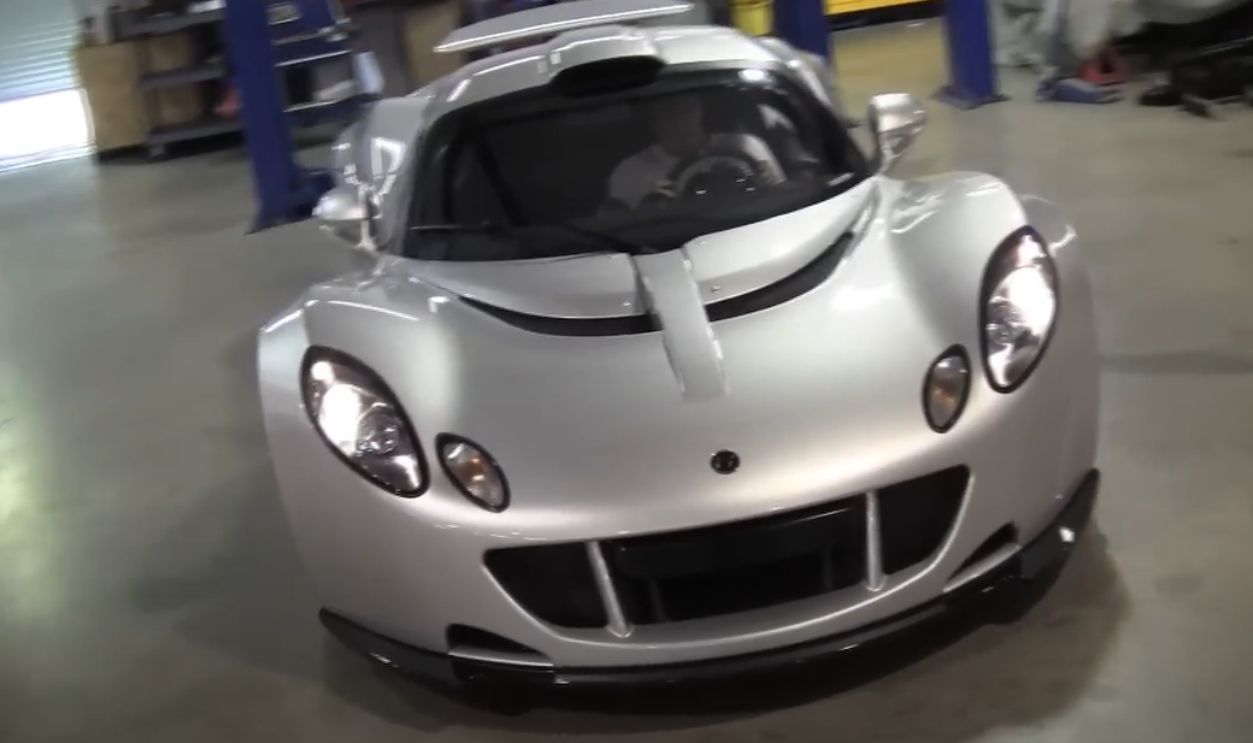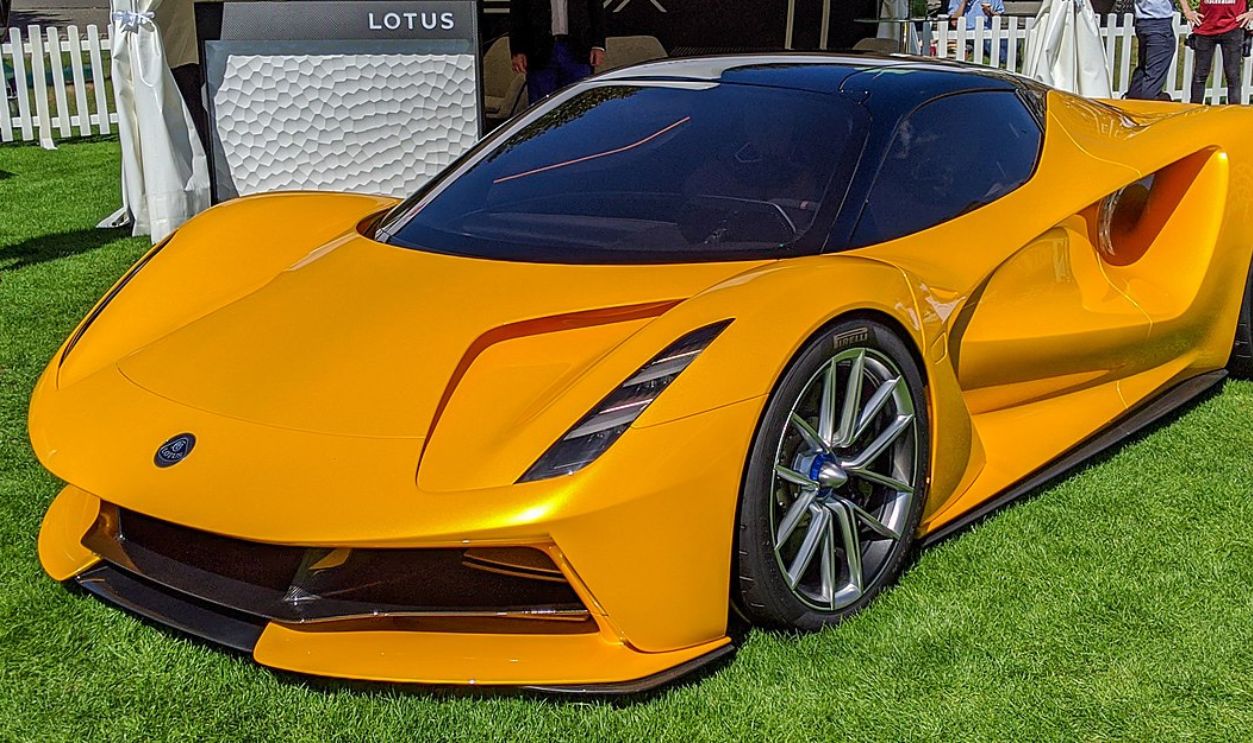Modern Supercars That Combine Style And Everyday Usability
It’s the 21st century, and some people still say there’s no practicality in supercars. But this era has given us cars that defy this statement by sporting remarkable practical features along with their stylish appeal.
 Supermac1961, CC BY 2.0, Wikimedia Commons
Supermac1961, CC BY 2.0, Wikimedia Commons
25. Bugatti Veyron 16.4 (2005)
Bugatti’s 2005 beast, the Veyron 16.4, shattered speed limits with its 1,001-horsepower quad-turbo W16 engine, hitting an insane 253 mph. Dubbed “the Concorde of cars”, it forced supercar makers, including Bugatti’s own Chiron, to aim higher—or risk irrelevance.
 Falcon® Photography, CC BY-SA 2.0, Wikimedia Commons
Falcon® Photography, CC BY-SA 2.0, Wikimedia Commons
24. Bugatti Chiron (2016)
If the Veyron pushed boundaries, the Chiron bulldozed them. Cheers to the 1,500 horsepower and a top speed of 261 mph—a show of Bugatti’s dominance in the hypercar world. The Chiron inspired other brands to push for higher limits right after its launch in 2016.
 Ghoster, CC BY-SA 4.0, Wikimedia Commons
Ghoster, CC BY-SA 4.0, Wikimedia Commons
23. McLaren 720S (2017)
Powered by a 4.0-liter twin-turbo V8 engine, the 720S produces an astonishing 720 horsepower and can reach 0-60 mph in just 2.7 seconds. With its lightweight carbon fiber construction and active aerodynamics, the 720S delivers a perfect balance of precision, speed, and luxury.
 Norbert Aepli, Switzerland, CC BY 4.0, Wikimedia Commons
Norbert Aepli, Switzerland, CC BY 4.0, Wikimedia Commons
22. Ferrari LaFerrari (2013)
Who says hybrids can’t be practical? The LaFerrari cme with a screaming V12 with a powerful electric motor, delivers 950 horsepower of guilt-free thrills. By fusing sustainability with blistering speed, the LaFerrari became the blueprint for future models like Ferrari’s SF90 Stradale.
 Clément Bucco-Lechat, CC BY-SA 3.0, Wikimedia Commons
Clément Bucco-Lechat, CC BY-SA 3.0, Wikimedia Commons
21. Porsche 918 Spyder (2015)
The 918 Spyder stunned the world by becoming the first production automobile to break the 7-minute barrier at the Nürburgring. It clocked an astonishing 6:57. This plug-in hybrid delivered both record-shattering performance and electric efficiency—telling skeptics that hybrids weren’t just tech experiments but real supercars.
 Chelsea Jay, CC BY-SA 4.0, Wikimedia Commons
Chelsea Jay, CC BY-SA 4.0, Wikimedia Commons
20. McLaren P1 (2013)
McLaren’s P1 was a wild science project that came to life: a total of 903 horsepower, active aerodynamics, and enough carbon fiber to make an aerospace engineer jealous. It didn’t just inspire McLaren’s Artura, but it also showed the world that hybrid hypercars could be innovative without losing their edge.
 MrWalkr, CC BY-SA 4.0, Wikimedia Commons
MrWalkr, CC BY-SA 4.0, Wikimedia Commons
19. Tesla Roadster (2008)
In 2008, Tesla’s Roadster was launched to make electric cars cool. Its 0–60 mph time of 3.7 seconds silenced doubters, while its 200-mile range made it usable for more than grocery runs. Without it, EV supercars like the Rimac Nevera might still be pie-in-the-sky dreams.
 Rutger van der Maar, CC BY 2.0, Wikimedia Commons
Rutger van der Maar, CC BY 2.0, Wikimedia Commons
18. Nissan GT-R R35 (2007)
Nicknamed “Godzilla”, the GT-R proved that you don’t need a million dollars to go fast. With its twin-turbo V6 and advanced all-wheel drive, this car tackled the Nürburgring in just 7:29. Affordable supercar performance? Nissan practically wrote the handbook for it.
 (Black Cat), CC BY 2.0, Wikimedia Commons
(Black Cat), CC BY 2.0, Wikimedia Commons
17. Chevrolet Corvette C8 (2020)
The Corvette reinvented itself in 2020, flipping the script on what an American supercar could be. With a starting price under $60,000, it made jaw-dropping performance accessible—it forced rivals to reconsider their pricing strategies. This affordability reshaped the supercar market. Exotic doesn’t have to be expensive.
 1994McLarenF1, CC BY-SA 4.0, Wikimedia Commons
1994McLarenF1, CC BY-SA 4.0, Wikimedia Commons
16. Koenigsegg Regera (2016)
In 2016, the Regera ditched traditional transmissions, using a direct-drive system paired with a hybrid powertrain. The result? 1,500 horsepower! Koenigsegg even threw out the gearbox and explained what a hypercar could be. It challenged everyone else to get creative.
 Norbert Aepli, Switzerland, CC BY 4.0, Wikimedia Commons
Norbert Aepli, Switzerland, CC BY 4.0, Wikimedia Commons
15. Pininfarina Battista (2019)
Pininfarina’s 2019 supercar honored the name of its legendary founder, Battista. Fully electric and sporting 1,900 horsepower, the Battista accelerated from 0–60 mph in under 2 seconds. Battista has Italian class and world-class tech that inspired rivals like the Rimac Nevera to bring their A-game.
 Alexander Migl, CC BY-SA 4.0, Wikimedia Commons
Alexander Migl, CC BY-SA 4.0, Wikimedia Commons
14. Lamborghini Murciélago (2001)
Lamborghini’s Murciélago was a statement with a naturally aspirated V12 and dramatic scissor doors; it shouted excess and flair. As the first model under Audi’s ownership, this Lamborghini model set the stage for the brand’s future while preserving its international personality.
 2001–2006 Lamborghini Murciélago | #walkaround by O Retrovisor
2001–2006 Lamborghini Murciélago | #walkaround by O Retrovisor
13. SSC Ultimate Aero (2007)
For a brief, glorious moment, the Ultimate Aero was the fastest production car on the planet, hitting 256 mph. Built in Washington state, it showed that boutique brands could indeed dethrone automotive giants, like Koenigsegg and Bugatti, who soon battled for the crown.
 SSC Ultimate Aero TT by WebRidesTV
SSC Ultimate Aero TT by WebRidesTV
12. Hennessey Venom GT (2011)
Take a Lotus chassis, add a 1,200-horsepower engine, and let chaos reign. The Venom GT hit an unofficial top speed of 270 mph, and it shook up the hypercar world. Small, nimble manufacturers suddenly became serious contenders. Hennessey’s Venom F5 is proof they’re just getting started.
 2011 Hennessey Venom GT at Idle by Hennessey Performance
2011 Hennessey Venom GT at Idle by Hennessey Performance
11. McLaren 12C (2011)
The 12C marked McLaren’s return to the road car market, and it didn’t hold back. Its twin-turbo V8 and carbon fiber tub set the standard for modern McLarens. You get comfort with razor-sharp performance. That year, the 12C laid the groundwork for icons like the 720S.
 Vauxford, CC BY-SA 4.0, Wikimedia Commons
Vauxford, CC BY-SA 4.0, Wikimedia Commons
10. Lamborghini Aventador (2011)
Holding a 6.5-liter V12 and a design that looked like a knife, the Aventador was impossible to ignore. This 2011 supercar was the poster child for the Lamborghini ethos: bold, brash, and unapologetic. A decade later, its influence is still seen in Lambo’s aggressive design language.
 Autoviva, CC BY 2.0, Wikimedia Commons
Autoviva, CC BY 2.0, Wikimedia Commons
9. Ferrari 458 Italia (2009)
The 458 Italia’s speed was sublime. Its naturally aspirated V8 revved to a glorious 9,000 rpm, delivering a symphony of speed. It redefined driver-focused supercars and set a new benchmark for handling, and this inspired the 488 GTB and Ferrari’s current mid-engine lineup.
 ravas51, CC BY-SA 2.0, Wikimedia Commons
ravas51, CC BY-SA 2.0, Wikimedia Commons
8. Aston Martin One-77 (2009)
Luxury meets insanity in this creation. The One-77 packed a 7.3-liter V12 under its sculpted aluminum hood that delivered 750 horsepower to just 77 lucky owners. It became a blueprint for Aston Martin’s hypercar ambitions; an influence to wild projects like the Valkyrie.
 Lee, CC BY 2.0, Wikimedia Commons
Lee, CC BY 2.0, Wikimedia Commons
7. Porsche Carrera GT (2004)
Its 612-horsepower V10, originally built for F1, made it an untamed ride. Revered by enthusiasts and feared by amateurs, it remains a symbol of raw engineering. It influenced Porsche’s lightweight designs, such as the 918 Spyder. Truthfully, a few cars demand respect, such as the Carrera GT.
 Charles, CC BY 2.0, Wikimedia Commons
Charles, CC BY 2.0, Wikimedia Commons
6. Lotus Evija (2020)
Lotus didn’t tiptoe into the electric game—they sprinted. Fast. This is because the Evija’s nearly 2,000 horsepower and ultra-lightweight construction made it a marvel of EV engineering. As one of the first electric hypercars, it challenged every automaker to step up their game.
 Chelsea Jay, CC BY-SA 4.0, Wikimedia Commons
Chelsea Jay, CC BY-SA 4.0, Wikimedia Commons
5. Ferrari SF90 Stradale (2019)
Ferrari’s SF90 Stradale married electrification with raw performance. This vehicle delivers 986 horsepower through its plug-in hybrid system. It became more than just Ferrari’s first hybrid supercar because it serves as proof that electrification could enhance performance rather than compromise it.
 Alexandre Prevot, CC BY-SA 2.0, Wikimedia Commons
Alexandre Prevot, CC BY-SA 2.0, Wikimedia Commons
4. Maserati MC20 (2020)
Maserati’s MC20 marked a triumphant return for the iconic trident badge. Its twin-turbo V6 delivers a formidable 621 horsepower, while the carbon fiber monocoque ensures lightweight agility. Blending timeless Italian elegance with blistering speed, it’s a bold statement that Maserati still excels in performance.
 Jengtingchen, CC BY-SA 4.0, Wikimedia Commons
Jengtingchen, CC BY-SA 4.0, Wikimedia Commons
3. Audi R8 V10 (2008)
Audi’s R8 redefined what a supercar could be with its V10 engine and Quattro all-wheel drive, which delivered breathtaking performance without sacrificing everyday usability. Dubbed the “everyday supercar”, it inspired competitors to prioritize comfort without compromising speed.
 Audi R8 V10 review: see how quick it really is… by carwow
Audi R8 V10 review: see how quick it really is… by carwow
2. Rimac C_Two (2021)
Rimac built the future with the C_Two for sure because it combined nearly 2,000 horsepower with advanced AI and a 400-mile range, proving EV hypercars could be fast, smart, and practical. Its success has cemented Rimac as a leader in electric performance.
 2021 Rimac C Two | World Most Powerful Electric Car by CAR CATALOGUE
2021 Rimac C Two | World Most Powerful Electric Car by CAR CATALOGUE
1. Mercedes-AMG One (2021)
Taking Formula 1 tech to the streets isn’t easy, but AMG pulled it off. With a 1.6-liter turbo hybrid engine and over 1,000 horsepower, the AMG One brought racecar performance to public roads. It’s a bridge between the track and the showroom we never saw coming.








